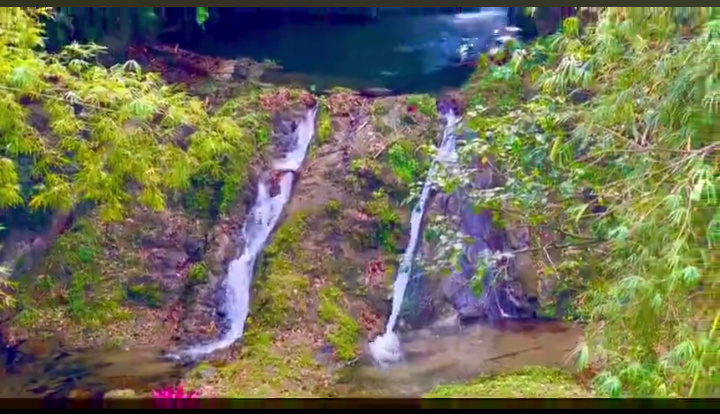Let’s take a look at the history of Trinidad and Tobago also will be exploring the rich culture and the mysterious places you can find in Trinidad and Tobago. I hope you find this article interesting.
A brief history of Trinidad and Tobago.
Without further ado, let’s begin by giving you a brief history of Trinidad and Tobago and the mysterious places, in the year 1498 a traveller by the name of Christopher Columbus discovered Trinidad and Tobago which was widely dominated by Arawak Indians before his arrival, the first indigenous settlers were killed and chased away by the European settlers.
It was Colonize by the Spanish 96 years later and it was under Spanish rule for two hundred years, during this process colonists the country changed their hands from French to British to Dutch, eventually ended up in the hands of the British, all this happened within a space of hundred years.
In 1889, the two Island was incorporated into a single political country named Trinidad and Tobago, which also obtained its independence from the British Empire and becomes a republic in the year 1976.

Fluent spoken language in Trinidad and Tobago.
Trinidad and Tobago has an official language and that’s English but it doesn’t sound like that a pure English language, that language is called Trinidad and Tobago Standard English and its officially used in government documentation and also been taught in schools, though Trinidad and Tobago has indigenous language spoken by the people and they call it Trinidadian creole, Trinidadian Hindustani and Tobagonian creole.
These languages are influenced by the many tribes you will get there, they have the Africans, Chinese, Indians, French and Spanish, they all comprise to make up this language.
In terms of African language found there, some words are similar to the ones in Africa most especially Nigeria, for example, words like Obeah in that country means witchcraft while in Nigeria (the Ibibio) its called Abia, popular bean cake in Nigeria is called Akara while in Trinidad and Tobago its called Akra.
Foods, Religion, Culture and beliefs in Trinidad and Tobago.
A large number of cultures have influenced the evolution of Trinidad and Tobago.
Roman Catholic, Hinduism, and Islam are the major religions in the country. The Anglicans, Sikhs, Jews, Buddhists, Presbyterians, Methodists, Traditional African Religion, Taoism, are some of the smaller religious groups in the country. The fastest-growing religious groups in Trinidad and Tobago are the Spiritual Baptist, Yoruba/Orisha faith, and two Afro-Caribbean syncretic faiths. American-style fundamentalist and evangelical churches are also gaining popularity in the country.
The Carnival which was introduced in Trinidad and Tobago by the French is one of the biggest public celebrations in the island nation.
It was originally celebrated by the elite class, the practice spread into the free population after the abolition of slavery, Christmas is also celebrated in the country when parang, a traditional style of music is played, and pastel, fruit cake, black cake, sweetbreads are eaten. The Hindu festivals of Diwali, Phagwah/Holi, and Shivratri popular with the Indians are also celebrated in the country with great joy and glory. Muslims observe Hosay which is the local form of the Shia Muslim.
Trinidad and Tobago are mysterious places.

There are some mysterious places you can find in Trinidad and Tobago, places like the spiritual hole where it was widely believed that just a dive into the blue river can cure all manner of diseases, religious people that have heard of this spiritual hole travel from afar to dive into the river for their cure.
Another remarkable place in Trinidad and Tobago is the Witchcraft tree. This silk-cotton tree is associated with a legend story of an African witch called Gang-gang Sarah who climb the tree and fell into her death attempting to fly back home, the tree is a vital point of the country’s heritage.
Former village Pentecostal pastor Rawlins Bacchus and villager Samuel “The Red Hat Man” Charles is warning anyone involved in removing the legendary silk cotton tree at Culloden Bay Road, Golden Lane, to do so while performing rituals.
Information on the tree’s legendary powers is transferred through the island’s oral tradition annually through the Heritage Festival.

The Mystery behind Trinidad and Tobago Witch Tree.
The tree was “uprooted”, following heavy rainfall. blocking village of Golden Lane and damaging two cars, villager Lovern Stewart-Charles said, for weeks, there was a cracking sound near the tree.
“We heard this long crack, crack, crack, crack, crack, and when we look out the tree was on the ground, and when we look down by the roots, it came out from the roots. That is how we knew it was the tree making the sound all the time.
Another villager, Charles, who grew up and remained in the village, claimed he has seen spirits asleep under the tree.
“Things like this (cutting the tree) will interrupt them so you have to talk to them by giving them rum and water. The workers, cut the tree, taking it for kicks. They might cut the tree now, and nothing happens, but bit by bit they will get sick, some might get blind, cripple, all kinds of things could happen to them.
“Although I am a Pentecostal, I have seen things growing up there. Men performed rituals there, They would dance to the tree and wipe their bodies after they had invoked the spirit, I remember seeing a man dancing in fire and putting a cigarette into a crapaud mouth and telling it to stay where it was. The crapaud did not move,” the pastor said.
Even now, people are said to visit the tree to perform rituals. The people cutting the tree, or living under it must talk to the spirits and offer something. They can’t just cut the tree and go about their business, he said.
Summary
I believe with this piece of information you would have gotten insight about Trinidad and Tobago also get to know about the supernatural places just in case you are planning on doing vacation in Trinidad and Tobago.


quero muito um dia ir a esse lugar, e tomar um banho de sol
Any fact to backup